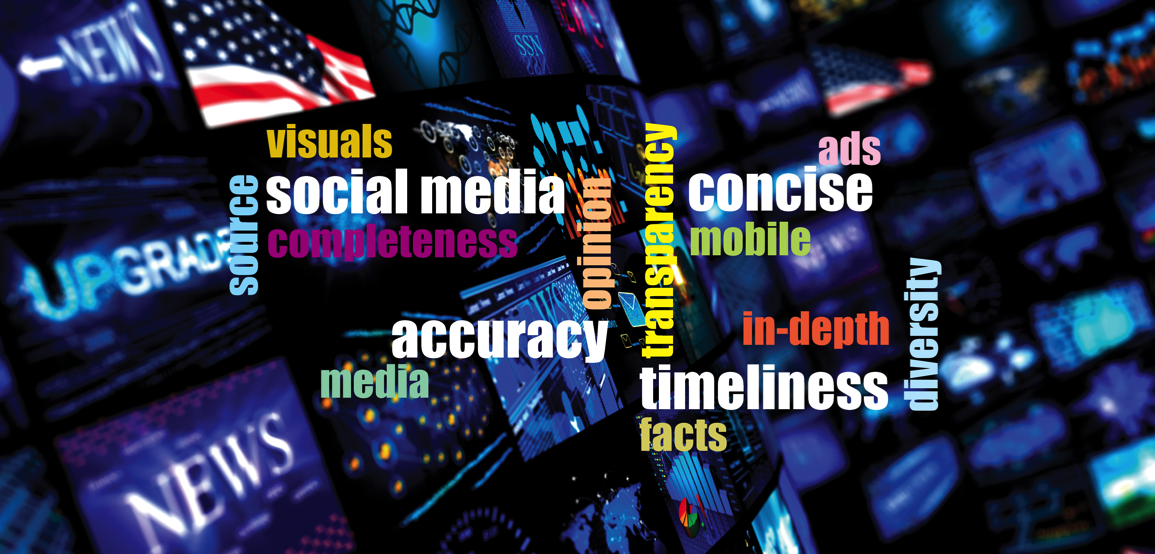Research on television news suggests strategies for making stories more memorable. But most of it is written in dense academic language and published in journals that aren’t read by working journalists. This summary–in simple language–is based on a review of 15 years worth of academic research into the effects on viewers of various types of content and production of television news. The research itself is cited and summarized in an annotated bibliography.
Images and visual content—Consider the impact
Compelling negative images affect what viewers remember. Studies have found that viewers remember best what they see during and after negative images, but not what they see before the negative images. And they don’t remember what they hear before and during the negative images.
Stories with pictures are remembered better than those without. But negative, emotional visuals can make stories harder to remember.
Audio-video redundancy—Connect the elements
Research does not support the common newsroom rule that any video is better than none. If visuals are not linked to content they can become a distraction. Routine video (file tape, meetings, arrivals and the like) that doesn’t match the content may make it harder for people to remember the content of a story.
When video and audio don’t match, people can remember what they saw just about as well as they can when the two are redundant, but they remember much less of what they heard.
When video and audio match, viewers understand stories better and remember the details of those stories better than stories where the video doesn’t match the audio.
Editing pace and style—How fast is too fast?
Quick edits increase attention but only to a point. If you’re cutting between different scenes, rather than editing within a visual sequence, there is a falloff in detail memory as edit speed increases. If you stay within a sequence, it doesn’t seem to matter how quick your edits are—memory for detail just keeps getting better.
A combination of fast-paced editing (changing from scene to scene) and emotional content can overload viewers. They pay attention and remember they saw something, but they can’t recall the details. If you have one or the other (fast edits or emotional content) people pay attention and are better able to recall details.
Edits within a scene increase both attention and memory. But edits between scenes decrease memory for information following the edit, for about 2 or 3 seconds.
Production techniques—Grabbing attention can affect credibility, memory
Production features like music, sound effects, slow motion, the use of flash frames as transitions between shots, and the obtrusiveness of the reporter’s voice can increase attention, but they appear to have no effect on memory.
Viewers say they find stories produced using these techniques (music, sound effects, slow motion, flash frames, and obtrusive voice) less enjoyable, less believable, and less informative than stories with identical content produced without them.
Graphics in stories can decrease memory for audio information at the time of the graphic, particularly if the content is difficult or unfamiliar. This was true even when the audio matched the graphic.
Animated graphics hold attention better than full-screen graphics or B-roll, and they improve viewers’ understanding and memory, especially for stories rated difficult to understand.
Story structure–How to tell memorable, accurate stories
A study that compared a typical inverted pyramid-style news story to a story containing the same information arranged chronologically found that people remembered the chronological story 15 percent better.
Using words high in imagery improves both attention and memory for stories without pictures.
Using personal examples to illustrate a trend can give viewers the wrong impression if the examples are not consistent with the trend. Seeing more examples of a problem leads people to think the problem is more serious than the underlying statistics reflect.
People believed a problem was more serious when they saw stories featuring an emotional victim as opposed to an unemotional victim or no victim at all.
Newscast structure–Watch what goes where
Stacking a newscast by putting similar stories together may impede recall of stories. This “clustering effect” can apply to stories with similar topic and context, and to stories with the same visual format. For viewers, the result is “meltdown,” where elements of stories merge or become confused with elements of another.
Variety improves viewers’ memory. While viewers tend to remember stories with video better than those without, putting an anchor read story between two video stories improves memory for the anchor story.
When programming that leads into a newscast is arousing, viewers tend to not remember much that happens during the first two minutes of the newscast.
In general, viewers tend to remember best the last stories they see in a newscast, the first stories less well, and the middle stories the least. Emotional stories and stories with good video can overcome this effect.
People pay more attention to stories that are teased. They remember stories better that are teased, and they understand them better. Recaps can improve understanding for stories, and can decrease memory for stories that are not recapped.








